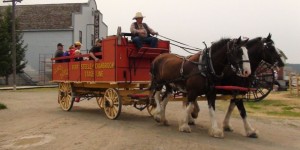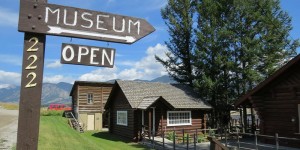History of the Columbia Valley
The history of the Columbia Valley is rich with stories of vision, courage and a huge sense of adventure. It is a history that belongs to both those who live here and those who come to play.
In the Beginning
Twenty thousand years ago, most of the Rocky Mountain Trench, of which the Columbia Valley is a part, lay under about 6,000 ft of ice. Glaciers came together, forming the rivers and lakes as we see and enjoy them today.
The Ktunaxa (Tun-NA-hah) people were the first known humans in the valley. According to archeological evidence, they have been here for at least 4,000 years. Their legends say they have been here forever. The Ktunaxa were a nomadic people, moving throughout their traditional territory according to the available supply of food.
Fur Trading
In 1807, the Northwest Company sent fur trader, explorer and cartographer, David Thompson, into the area to map the region and develop trade with the aboriginals. Thompson established a busy fur trading post overlooking the Columbia River. He called it Kootenae House and used it as a base while he launched his explorations and traded with the Ktunaxa. Today, the location of Kootenae House is a National Historic Site near to the community of Wilmer.
Mining

By the mid-1850s, gold miners had moved into the area because of the discovery of this precious metal along the Thompson and Fraser rivers. Over many decades, mining flourished with more or less success, from one end of the Columbia Valley to the other.
During their lifetimes, hundreds of mines produced gold, silver, lead, copper, zinc, cadmium and barite. Today, coal mines in the valley supply much of the country’s coal.
Perhaps the most famous of all the mines in the Columbia Valley was the Sullivan Mine at Kimberley. Over its lifetime, the Sullivan Mine produced 150 million tonnes of ore, 3 billion ounces of silver, 8 million tonnes of zinc and 8 million tonnes of lead.
Arrival of the settlers
In the early part of the 20th century, when the mining boom ended and the miners left the area, the history of the Columbia Valley took a dramatic turn which would change everything that came before.
European settlers arrived in the Columbia Valley, attracted by the Columbia Valley Fruit Lands Ltd with the promise of a prosperous future in agriculture. The semi-arid climate and poor soil of the land were a disappointment, however, and some left the area. But many hardy people put down strong roots in the valley and a lot of their ancestors remain today.
Copper City
The first real settlement in the area was established in 1890, and named Copper City, which, 10 years later was renamed Canterbury, then in 1909 became Invermere.
Logging
The opening of the Banff-Windermere Highway in 1923, led the way for many new markets to come to the valley and because of the seemingly endless forests in the area, logging became the most important industry for many decades.
Tourism
When the unspoiled beauty of the area, the hot springs and the clear lakes and rivers began to be appreciated by visitors, tourism became the strong driver of the economy and remains so today.









